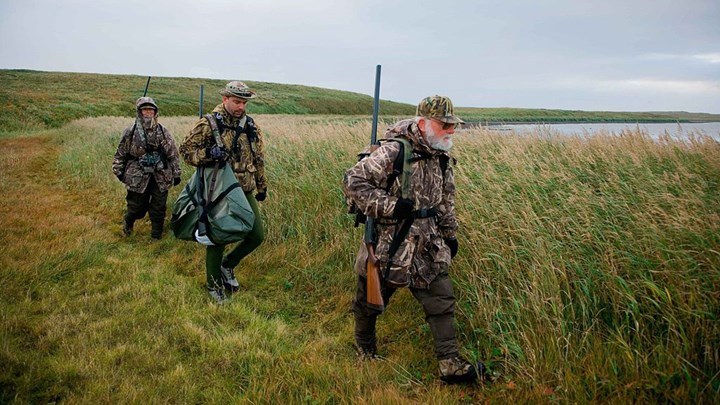
by Chris Chaffin - Tuesday, May 14, 2019

As I previously reported on this website, in May 2018 more than 300 representatives from 40-plus states and 100 shooting sports and hunting organizations, state wildlife management agencies and industry companies attended the first-ever R3 (Recruitment, Retention and Reactivation) Symposium in Lincoln, Neb. The purpose was to provide a venue for partners focused on the growth of hunting, angling, target shooting and boating to strategize and ultimately accelerate the current national efforts to recruit, retain and reactivate participants in outdoor recreation. It was evident that many organizations still had not made R3 efforts a high priority. For this reason, one of the R3 Symposium’s special sessions addressed how organizations could take a more “business-like” approach to R3. Though it was not a new concept, the session titled “21st Century Business Practices” to foster the R3 movement was met with a strong and positive response.
In this session, the Arizona Game and Fish Department’s Chief Information Officer Doug Cummings observed “…that to embrace R3, conservation organizations must build relationships with their members, license buyers and consumers; and may do so by bolstering their capacity to embrace better business practices, marketing and technology.” Cummings further stated that everyone in an agency—from accounting to law enforcement to fisheries managers to wildlife biologists—needs to embrace R3 as being crucial to the organization’s future and part of everyday responsibilities if the entire agency is to succeed in this initiative.
However, in questioning the audience, symposium managers found only 29.9 percent of attendees felt their organization did “very well or reasonably well in making it clear that R3 was the responsibility of everyone in the organization,” while 74 respondents, or 44.3 percent, felt their organization made it only slightly clear—or not clear at all.
When asked what one thing could be done to make increasing the percentage of Americans participating in outdoor recreation a priority to everyone in your organization, participants offered “far-reaching and transformative cultural changes… .” Many noted these changes need to come from the top down to all departments and staff. The most prominent responses shared addressed the need to educate staff, be mindful of one’s organizational culture and focus on promoting education in the hiring and job evaluation processes.
Some of the most frequently noted responses within the “educate staff” category were to promote the need to educate and market to everyone until it becomes part of the culture, ensure everyone understands that their jobs depend on it and make education part of the criteria employees must meet to receive a successful annual evaluation.
It was noted that corporate or organizational culture, however, is a tough thing to address if you are trying to change it. Symposium participants recognized it as a principle area needing change if an R3 mentality is to be ingrained. Their responses to questions about how to change existing culture reflect the importance and challenge in this arena.
Many felt that strategic planning, specifically for R3, was needed within the organizations. Others expanded on the need to make it part of respective agency-wide strategic plans. The key: to set realistic, measurable goals and encourage the use of an adaptive approach in coordinating the planning. Additional responses included:
In marketing—and in business—knowing who you are talking to is vital to success. But less than 13 percent of symposium respondents felt their organization had “completely identified its target audiences.” In addition, just under 30 percent felt they had “identified their target audiences a little or not at all.”
Just as important as knowing who the audience needs to be is being able to understand the audience. Again, attendees did not think their organizations did well in this area. Only 6.4 percent felt they “completely” understood their target audiences and just over 50 percent felt they understood their audiences “a little or not at all.”
As noted in the symposium’s official report, these responses highlight that without an understanding of the target market, it is difficult to: design products, services or programs that relate to your market; develop messaging intended to persuade/motivate your market; and deliver messages to your market.
As for the primary obstacle that is preventing these organizations from gaining this vital better understanding of their target audiences? Attendees felt:
The information shared above is important because the future of hunting—and professional wildlife management, as we know it—depends on the support for these activities generated by hunters. With hunter numbers in decline, there must be change in the industry and agency cultures that will put R3 needs and programs at the top of their priority and budget lists.
The good news: Symposium participants demonstrated a solid understanding of communications and marketing. Now, agency and industry leadership needs to adapt decision-making, hiring and budgeting to make recruitment, reactivation and retention of hunters a priority.
If we care about wildlife and our future opportunities to hunt, we must get involved in building both present and future ranks of hunters. Keep in mind that constituent support and demands help direct change at agencies.
To examine the information in this article in depth, read the report from the symposium.
About the Author: Chris Chaffin has been an outdoor communicator, educator and partnership manager for more than 40 years. On the national scene, he has represented several prominent companies in the outdoor community and served two terms as treasurer of the Professional Outdoor Media Association (POMA), eventually taking on the roles of vice-president, president and chairman of the board. In 2007, he launched Chaffin Communications, Inc., a communications consulting company focusing on the outdoors. In 2012, with support from the Outdoor Adventure Dream Giveaway, Chaffin founded and currently manages the Outdoor Adventure Conservation Fund, a Florida non-profit established to encourage and facilitate more people participating in traditional outdoor activities.
Follow NRA Hunters' Leadership Forum on Twitter @HuntersLead.
E-mail your comments/questions about this site to:
[email protected]
